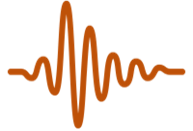Modern societies have concerns about growing annoyance due to noise in private dwellings and in commercial worksites. People are exposed to the noise from neighbours, adjacent offices and road traffic which causes disturbance in sleep, physical or mental work impairments. Though ISO (International Standards Organization) provides sound insulation guidelines to protect citizens from the noise exposures, these guidelines do not provide an optimal acoustic satisfaction especially for specific sounds, for example a conversation varying in intelligibility.
In this course we will addresses the challenges in traditional sound insulation models, filters and auralization techniques, and establishes an interface between psychoacoustic research and building acoustics in audio-visual VR environments. We will see how the improvements can be made in sound insulation prediction methods, filters construction and rendering techniques for sound insulation auralization.
We will also learn virtual building acoustic framework (VBA) which is a guide line toward real-time interactive audio-visual technology, and which makes us able to introduce more realism and, hence, contextual features into psychoacoustic experiments.
We will also learn how the listening experiments close to real-life situations can be carried out to show that the virtual building acoustics can be used as an alternate to design test paradigms which help to better analyze and interpret the noise impacts in built-up environments situations depending on the actual activities.
- Trainer/in: System Administrator
